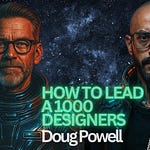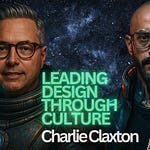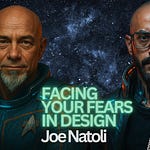Overview
In this conversation, Stefan Barac shares his journey from a childhood filled with creativity and mechanical interests to becoming a consultant focused on accessibility in design. He discusses the importance of understanding cultural and social dynamics in accessibility, the challenges of convincing companies to invest in inclusive design, and the need for a shift in mindset towards accessibility as a fundamental aspect of product development.
Stefan emphasizes the role of education and communication in fostering a culture of accessibility and the tangible benefits it brings to businesses and society.
About the guest
Stefan Barac has been focusing on accessibility and sustainability for 15 years. Even during his studies, he was concerned with the purpose and added value of accessible solutions.
The focus was on machine function in mechanical engineering; ergonomic handling in automotive design; And in the strategic application of accessibility in his studies of industrial design.
Over time, he has become a leading expert in the field of B2B "business to business" services. Whether machine lines in production plants, medical tools or public services. Whether physical or digital. The requirements of accessibility are constant for him!
As a strategic consultant, Stefan Barac has been helping companies to set goals in the area of accessibility since 2024. The realization of this sustainability topic brings more turnover. This not only improves the company's finances but also its DNA. The basic rules: It's about helping people by solving their problem. Increasing efficiency comes later.
Podcast Summary
Cultural roots and early interests
(00:01–04:17)
Stefan shares his Croatian background and early dual fascination with art and science. A childhood spent sketching, doing mathematics, and daydreaming laid the foundation for his creative and technical curiosity.From mechanical engineering to product design
(06:20–08:19)
A mentor and hands-on exposure to mechanical work pushed him toward solving practical problems, which eventually transitioned into product and user experience design.Humbling through user testing
(08:19–10:16)
Early arrogance about having “perfect solutions” faded after usability tests revealed major accessibility gaps. This led Stefan to a user-centered mindset, recognizing it wasn’t the users’ fault—it was the design’s failure.Disillusionment with industrial design
(11:28–13:17)
Working in automotive and hardware companies like Opel, Stefan encountered pushback against designing for maintainability or user serviceability, sparking his shift toward more meaningful design.Accessibility is a social, not just technical, issue
(15:49–18:22)
He emphasizes that accessibility can’t be fixed externally—it must be embedded culturally. Solutions like cochlear implants may not be universally ideal; instead, systemic social behavior change is needed.Accessibility = better business
(20:54–24:41)
Barac makes the business case: accessible design leads to fewer injuries, better machine operation, and opens products to broader markets (e.g., ~10% of Swiss population needs accessible features).Zero-sum nature of accessibility
(23:08–25:46)
Unlike general usability, accessibility is binary—you either include people or exclude them. Small tweaks (like simple language) can yield high returns and help previously excluded users (e.g., a blind developer).Inclusion vs accessibility
(30:25–31:53)
Accessibility removes tangible barriers for people with disabilities. Inclusion goes further—it’s cultural, political, and systemic. Many hearing-impaired individuals view themselves as part of a culture, not as disabled.Consulting challenges: no budget, no buy-in
(35:53–38:33)
Most companies lack specific budgets for accessibility, treating it as an afterthought. His strategy is to mentor internal teams and push for formalized investment.Designers as agents of change
(44:45–48:30)
Stefan believes designers have a role beyond aesthetics—they must communicate utility and challenge organizational culture with data, stories, and humility. His guiding principle: do what makes you happy, but with impact.
Discussion takeaways
Stefan's heritage includes Arabic and Croatian roots, influencing his identity.
He identifies as a problem solver, focusing on making the world more accessible.
His childhood interests in creativity and mechanics shaped his career path.
Stefan's mentor emphasized the importance of user experience in design.
He believes accessibility is a social problem, not just a design issue.
Stefan transitioned to consulting to address accessibility challenges in companies.
He highlights the economic benefits of investing in accessibility measures.
Cultural shifts are necessary for companies to embrace accessibility.
Education plays a crucial role in changing mindsets about accessibility.
Stefan encourages designers to pursue what makes them happy.













Share this post